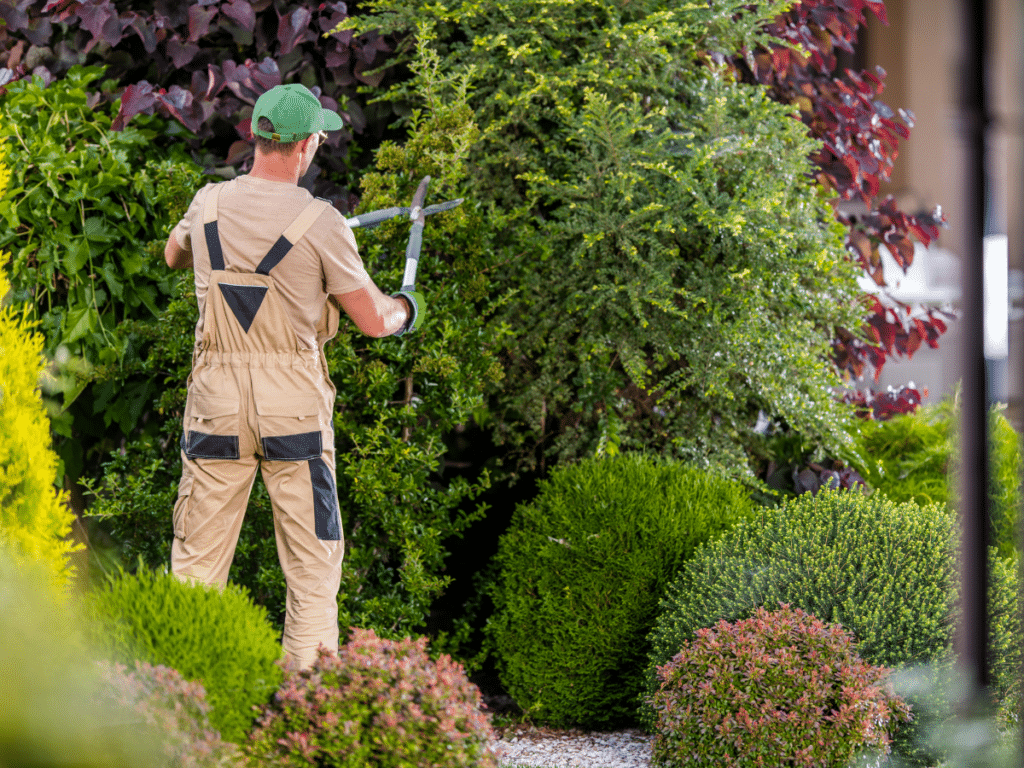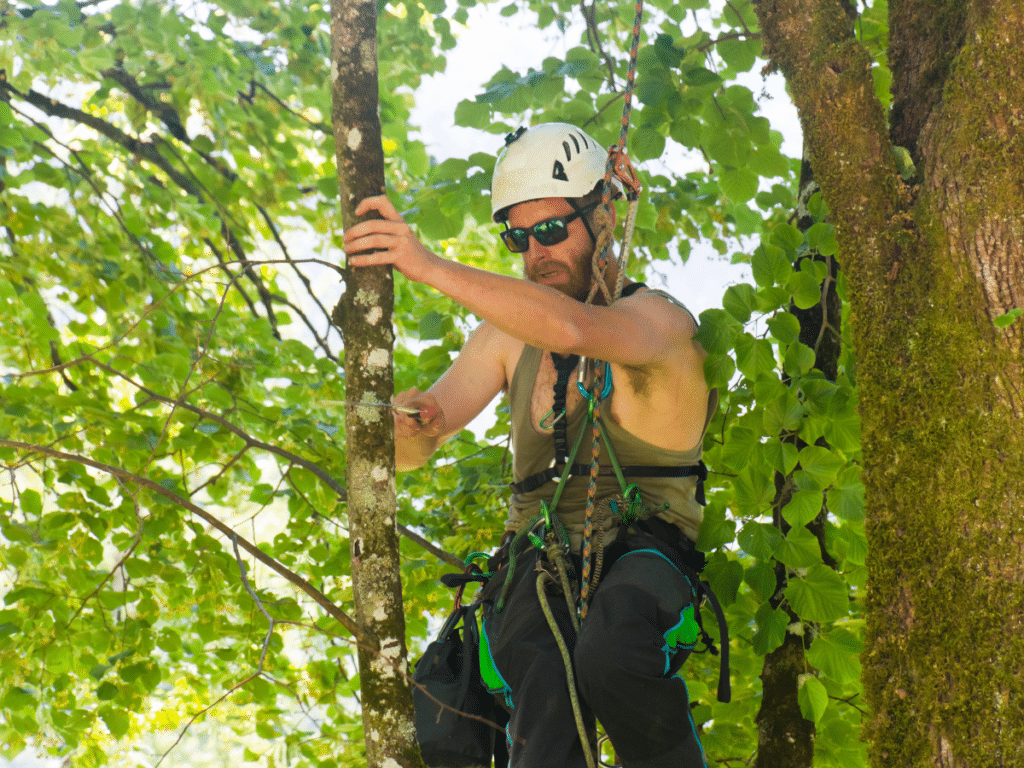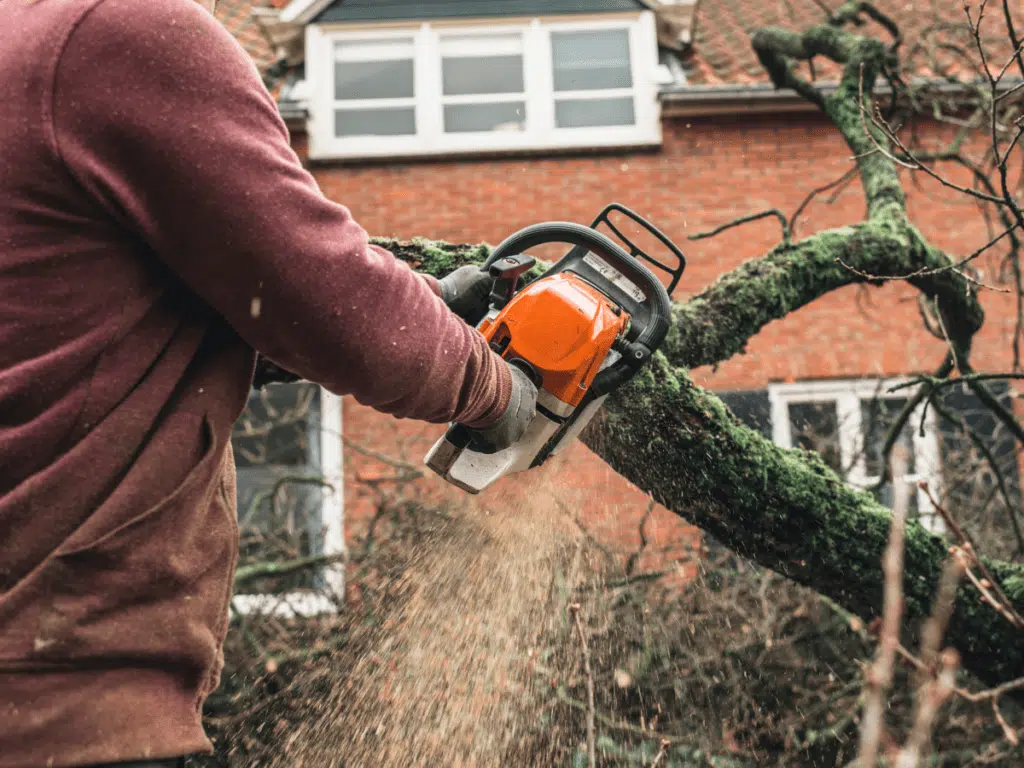
When it comes to tree trimming safety in Dallas, there are key precautions to follow. First, always wear appropriate safety gear, including helmets, goggles, gloves, and sturdy footwear. Use proper tools and techniques, such as using a ladder with secure footing and maintaining a safe distance from power lines. Lastly, consider hiring a professional tree trimming service to ensure the task is handled safely and efficiently.
The Importance of Tree Trimming Safety Tips in Dallas
Dallas is known for its beautiful landscapes with lush greenery and towering trees that line the streets and parks. However, these trees need constant maintenance to keep them healthy and safe.
Tree trimming is an essential task that helps remove dead branches, shape the tree, promote growth, and improve its overall appearance. While tree trimming is a necessary task, it can also be dangerous if proper safety measures are not taken into account.
According to the Occupational Safety and Health Administration (OSHA), tree trimming is one of the most hazardous occupations in the United States. Every year, there are numerous reports of injuries and fatalities caused by falls from heights or accidents involving equipment such as chainsaws or ladders.
This makes it crucial for both professionals and individuals to prioritize safety when performing this task. Tree trimming safety entails a range of precautions that must be followed to ensure safe work conditions for everyone involved in the process.
It requires a combination of proper tools, equipment, training, knowledge of potential hazards, caution, and respect for nature. In this article, we will cover everything you need to know about tree trimming safety in Dallas so you can undertake this important task safely without encountering any unpleasant surprises along the way.
Personal Protective Equipment (PPE)
When it comes to tree trimming, personal protective equipment (PPE) is essential to ensure safety. The most common PPE for tree trimming includes hard hats, eye and ear protection, gloves, boots, and chaps. Each of these pieces of equipment serves a specific purpose in keeping you safe while trimming trees.
Explanation of the different types of PPE needed for tree trimming
- Hard hats are important to protect your head from falling branches or debris.
- Eye and ear protection are necessary to protect your eyes from sawdust or other debris that may fly up during the trimming process and your ears from loud machinery noise.
- Gloves should be durable enough to protect your hands from sharp edges on tools or branches but also flexible enough for easy handling of tools.
- Boots with slip-resistant soles are important for maintaining firm footing when climbing trees or working on uneven ground.
- Chaps provide an extra layer of protection against accidental cuts or scratches while using chainsaws.
Tips on how to properly wear and maintain PPE
PPE is only effective if it is worn correctly and maintained properly. Ensure that you wear all the necessary equipment before getting started with any tree-trimming activity.
Hard hats should fit snugly on your head without being too tight or too loose. Eye protection should be adjusted accordingly so they do not obstruct vision but still cover the area around the eyes completely.
Gloves should be checked regularly for tears or holes that can compromise their ability to protect your hands effectively. Replace them if necessary.
To maintain boots, clean them regularly after every use to remove any dirt buildup that may cause them to get slippery when wet, diminishing their slip-resistant capabilities over time. Chaps should also be checked frequently for any signs of wear and tear; replace them if necessary.
By taking care of your PPE, you ensure that they are always in good condition when you need them most. Personal protective equipment is crucial to keep yourself safe while trimming trees.
Ensure that you have all the necessary PPE and that it is worn correctly before starting any tree-trimming activity. And remember to maintain your PPE regularly to ensure its effectiveness over time.
Tool Safety
When it comes to tree trimming, tools are an essential part of the job. However, these tools can also be dangerous if not used properly. Knowing the potential hazards of each tool and how to use them safely is crucial for every tree trimmer.
Overview of Common Tools Used in Tree Trimming and Their Potential Hazards
- One common tool used in tree trimming is a chainsaw. Chainsaws are powerful machines that can easily cut through even the thickest branches, but they also pose some serious risks. The sharp chain can cause severe injuries if it comes into contact with skin or clothing, and kickback is a common hazard that can occur when the tip of the bar hits an object during cutting.
- Another tool commonly used in tree trimming is a pruning saw. This saw has a curved blade specifically designed for cutting branches close to the trunk of the tree. However, like any saw, it can be dangerous if not used carefully. Pruning saws should always be kept sharp to prevent slipping and should never be used above shoulder height, as this increases the risk of losing control or balance.
Tips on How to Safely Use and Maintain Tools
To ensure safety while using tools for tree trimming, workers must follow some best practices:
- Always wear appropriate personal protective equipment (PPE), including eye protection, gloves, a hard hat, hearing protection, and steel-toed boots.
- Inspect all tools before use to ensure they are in good condition.
- Use proper grip techniques when handling tools.
- Keep tools clean and well-maintained by wiping them down after each use.
- Always handle gasoline properly when refueling gas-powered equipment.
Following these tips will help reduce risks associated with using these powerful tools during a potentially hazardous job like tree trimming.
Electrical Safety: Stay Clear of Power Lines
Tree trimming is a dangerous job. It requires workers to climb up and down tall trees, use sharp tools, and work with electrical equipment.
- One of the most significant hazards in tree trimming is electrical shock caused by power lines. Contact with high-voltage electrical wires can cause severe injuries or even death.
- When working on a tree near power lines, it’s essential to stay safety-conscious. Electrical safety should be a top priority for anyone performing tree-trimming activities.
- Before starting work, take some time to assess the situation and identify potential hazards. Make sure that you are not working anywhere near overhead power lines, and if you are not sure about the proximity of power lines around you, contact your local utility company before proceeding.
How to Avoid Electrical Hazards While Tree Trimming
To avoid accidents while working near power lines:
- Always assume that any wire you see hanging from a pole or transformer is live.
- Stay at least ten feet away from all overhead electrical wires.
- If a branch or other object is touching an overhead line or close enough that it might touch when cut or moved, do not try to move it yourself.
- Contact your local utility company for assistance if necessary when dealing with objects close to powerlines.
- Always use non-conductive tools while doing any tasks near electric cables.
Remember that electricity can jump from the wire to your body without actually touching it. Keep these electrical safety tips in mind when trimming trees around high-voltage equipment areas – remember to err on the side of caution!
Climbing Safety
Scaling Trees with Confidence
When trimming trees, you might need to climb up to reach the higher branches. However, climbing trees can be dangerous if proper safety measures are not taken. Climbing without the right equipment or techniques can result in serious injuries and even fatalities.
To avoid such hazards, you must follow some essential safety tips.
- Firstly, you should always wear a harness while climbing a tree. Harnesses keep you securely attached to the tree trunk and prevent falls from high up in the canopy. Ensure that your harness fits snugly around your waist and thighs. Attach a safety line to the harness before ascending so that you are not left hanging if you lose your footing.
- Secondly, when climbing trees for trimming purposes, it is essential to use proper techniques for ascending and descending safely. Do not climb straight up like a ladder; instead, aim for a diagonal ascent with one foot resting on one side of the tree trunk while your other foot pushes off from the opposite side. This technique allows each step to support your weight better and minimizes stress on each branch as well as the trunks supporting them.
Climbing Equipment: A Comprehensive Guide
To ensure maximum safety while climbing trees for trimming purposes in Dallas, it’s essential to select suitable equipment for climbers’ needs – there’s no one size fits all situation here! Here’s an overview of several types of equipment options available:
- Firstly, we have spurs that feature spikes that dig into the bark, making them ideal for scaling tall trees like palms; however, long-term use may damage healthy wood growth over time.
- Secondly is SRT (Single Rope Technique) which uses only one rope anchored securely at ground level and then pulled through various anchoring points throughout the tree scaling process hence minimizing friction between rope fibers while ascending or descending – best suited for smaller tree species or delicate limbs.
- There is DRT (Double Rope Technique), which employs two ropes instead of one. One rope supports the climber’s weight while the other is used to stabilize and balance as they move along different branches for pruning. This method offers better protection in case one rope fails, and it’s suitable for scaling tall trees with a lot of weight on their limbs.
Climbing trees for trimming purposes can be hazardous if you’re not using the proper techniques or equipment. By following these safety tips and selecting the right type of gear, you can minimize your risk of accidents while getting the job done efficiently. Remember to always prioritize safety when working on trees!
Environmental Hazards
The Danger of Unstable Branches
One of the biggest hazards that tree trimmers encounter is unstable branches. These can be caused by many factors, including disease, decay, or storm damage. When a branch is unstable, it can snap or break unexpectedly, potentially causing injury or even death.
To avoid the danger of unstable branches, it’s important to thoroughly inspect the tree before beginning work. Look for signs of damage or decay, such as cracks in the trunk or major limbs, dead wood in the canopy, or fungus growing on the bark.
If you notice any of these warning signs, it’s best to call in a professional arborist who can safely remove the tree. If you do decide to proceed with trimming an unstable tree yourself, there are several precautions you should take.
First and foremost, always wear appropriate personal protective equipment (PPE), including a hard hat and eye protection. Use a pole saw rather than climbing into the canopy whenever possible, and never stand directly under an unstable branch while cutting it down.
Wildlife Nests and Other Environmental Hazards
Another common environmental hazard during tree trimming is wildlife nests. Birds and squirrels often make their homes in trees and may become aggressive if they feel threatened by humans nearby. To avoid disturbing wildlife nests during trimming operations, always check for signs of nesting before beginning work.
Look for twigs and leaves gathered together high up in the canopy – this is likely indicative of a bird’s nest – or listen for rustling noises that could indicate there are squirrels present. If you do come across a wildlife nest during trimming operations, it’s important to stop work immediately and call in a professional animal control expert who can safely relocate any animals if necessary.
Other environmental hazards to watch out for include uneven terrain below the tree that could cause falls; poisonous plants like ivy or poison oak that could cause skin irritation and allergic reactions; and adverse weather conditions like high wind, lightning, or heavy rain. Keep an eye on the weather forecast before beginning work, and always be prepared to stop operations if conditions become unsafe.
Frequently Asked Questions
What safety measures should be put in place when trimming tree limbs?
When trimming tree limbs, one should always wear protective gear such as gloves, safety glasses, and sturdy footwear, and avoid working near power lines. Use a sturdy ladder or hire a professional for high branches, and never trim a tree during bad weather when branches can be slippery or unstable.
What are pruning safety tips?
Pruning safety tips include always wearing protective equipment, such as gloves and safety glasses, ensuring your tools are sharp and clean, and never attempting to prune branches near power lines. It's also advisable to use a ladder or pole pruner for high branches rather than climbing the tree, and always having a spotter or helper nearby for safety.
How do you prune trees in Texas?
In Texas, pruning trees is best done during the dormant season, typically late winter or early spring, to minimize stress on the tree and reduce the spread of diseases. Always clean your tools between cuts to avoid spreading diseases, and make your cuts at the correct angle and location to encourage healthy growth and prevent damage.
What is the best practice tree trimming technique?
The best practice tree trimming technique involves making clean cuts at the branch collar without leaving a stub or cutting into the trunk, which can harm the tree. Always start by removing any dead, diseased, or damaged branches, and avoid removing more than 25% of a tree's foliage in a single season to prevent stress.
Why is it important to follow the pruning safety procedures?
Following pruning safety procedures is important to prevent injuries and ensure the health of the tree; improper pruning can lead to damage that makes the tree more susceptible to disease and pests. Additionally, safety procedures such as using the proper tools and protective gear can prevent accidents like falls or cuts.
How do you safely limb a tree?
To safely limb a tree, start by wearing the appropriate safety gear, including gloves, safety glasses, and sturdy footwear. Use a sharp, clean saw or pruning shears, and always cut from the outside of the branch, slightly above the branch collar, without cutting into the trunk or leaving a stub.
Conclusion
Overall, tree trimming can be a dangerous job if proper safety precautions are not taken. By using the right personal protective equipment, following safe tool usage practices, being aware of electrical hazards, understanding proper climbing techniques, and identifying environmental hazards, tree trimming in Dallas can be done safely and effectively.
Remember to always prioritize safety above all else when engaging in any kind of tree-trimming activity. Taking the time to properly prepare yourself and your equipment can help prevent accidents and injuries down the road.
By being cautious and vigilant throughout the process, you can ensure that your trees are well-maintained while keeping yourself out of harm’s way. It is important to remember that tree trimming is an essential part of maintaining a healthy and beautiful landscape in Dallas.
With these tips in mind, you can perform this task safely and efficiently while protecting both yourself and your trees. So get out there and trim those trees – just remember to always put safety first!






